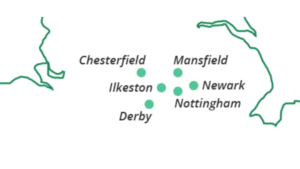Recently, the high profile prosecution of ex-police officer David Duckenfield relating to the Hillsborough tragedy ended without reaching a conclusion. A number of papers reported that there was a hung jury. So, what does that mean?
In an ideal world, a jury will reach a clear conclusion by either convicting or acquitting the defendant.
Where a case retains the original 12 jurors at least 10 must agree on the verdict. If the numbers fall short, for example, with 8 wanting to acquit and 4 wanting to convict, that will not be an acceptable verdict.
If the jury indicates that they will not be able to reach a verdict in accordance with the law then then that jury will need to be discharged.
In legal terms, this is often referred to as a hung jury.
What happens if there is a hung jury?
The prosecution can apply to have the defendant tried again. This will be the outcome in most cases.
The decision is one for the trial Judge who will consider whether or not it is in the interests of justice for a retrial to take place.
Typically, the court considers questions which include (but are not limited to) whether:
- the alleged offence is sufficiently serious to justify a retrial
- if re-convicted, the appellant would be likely to serve a significant period or further period in custody
- the appellant’s age and health
- the wishes of the victim of the alleged offence.
If prosecutorial misconduct is alleged then other factors will come into play, analogous with whether it is an abuse of process to allow a retrial.
In most cases, the defence will not be able to properly resist the application. We would, however, always carefully consider all relevant factors and object if able to.
What happens if a second jury still cannot reach a verdict?
The usual practice in this scenario is for the prosecution to offer no evidence, although there are rare circumstances where a further retrial could take place.
Contact an expert in Crown Court representation
We are specialists in Crown Court litigation and advocacy. You can read about how we prepare for such serious cases here.
Legal aid is likely to be available for defending a Crown Court case.
Here are some of the cases that we have dealt with recently:
Successful defence of a serious robbery in the home.
Successful challenge of expert evidence in drugs case.
Abuse of process in paedophile hunter case.
We have offices across the East Midlands. From those we provide nationwide advice and representation.
You can find your nearest office here.

Alternatively you can use the contact form below:



